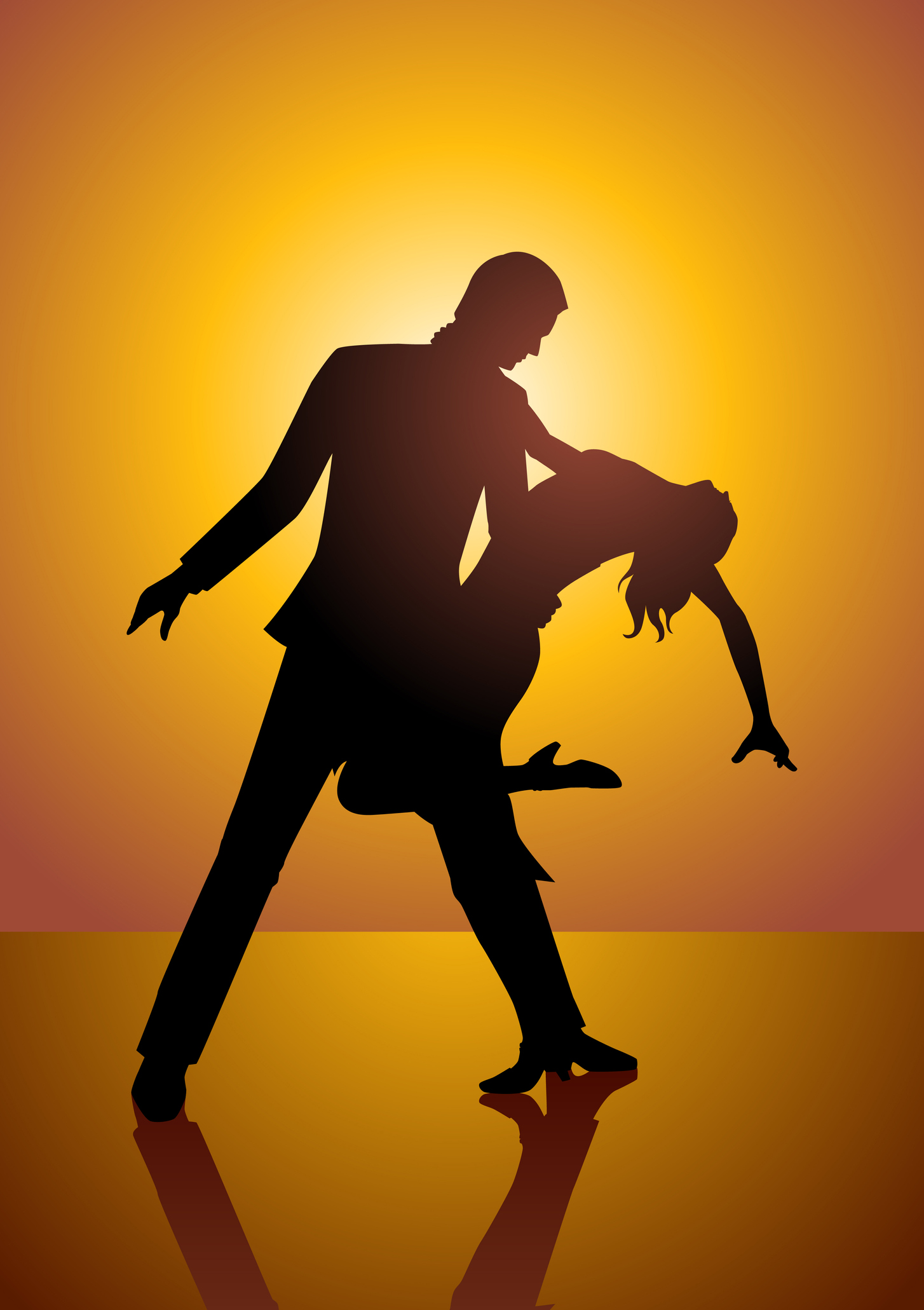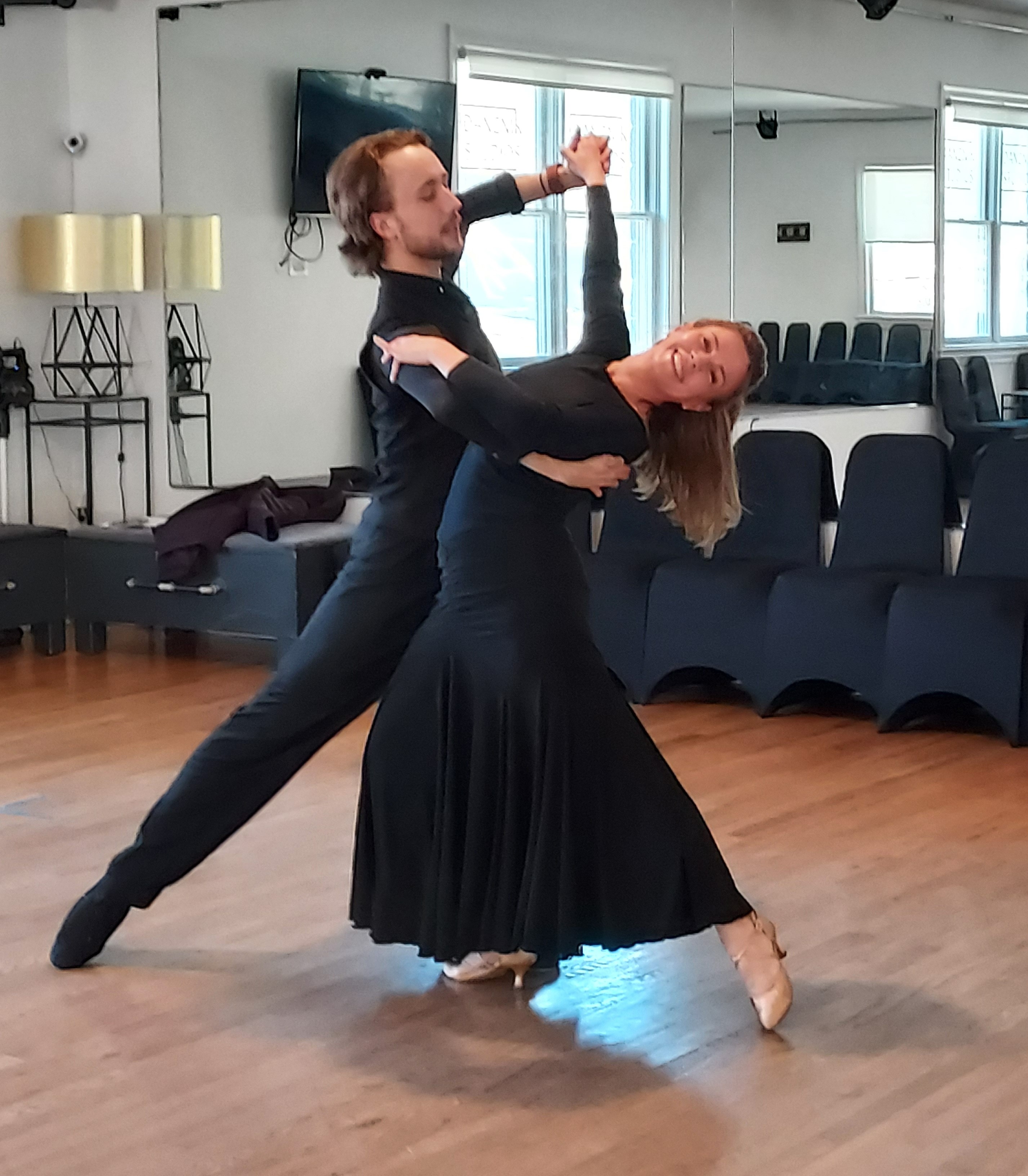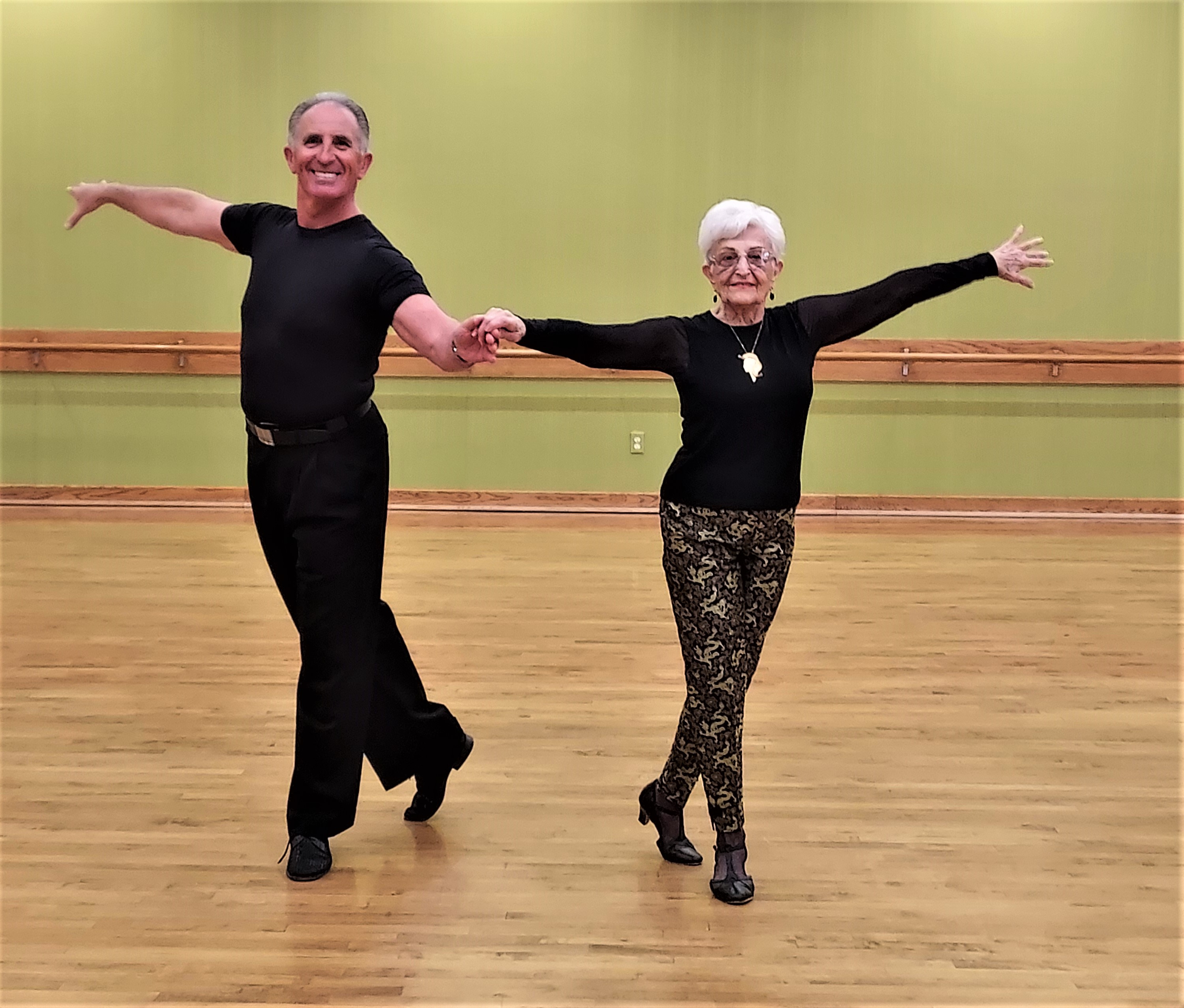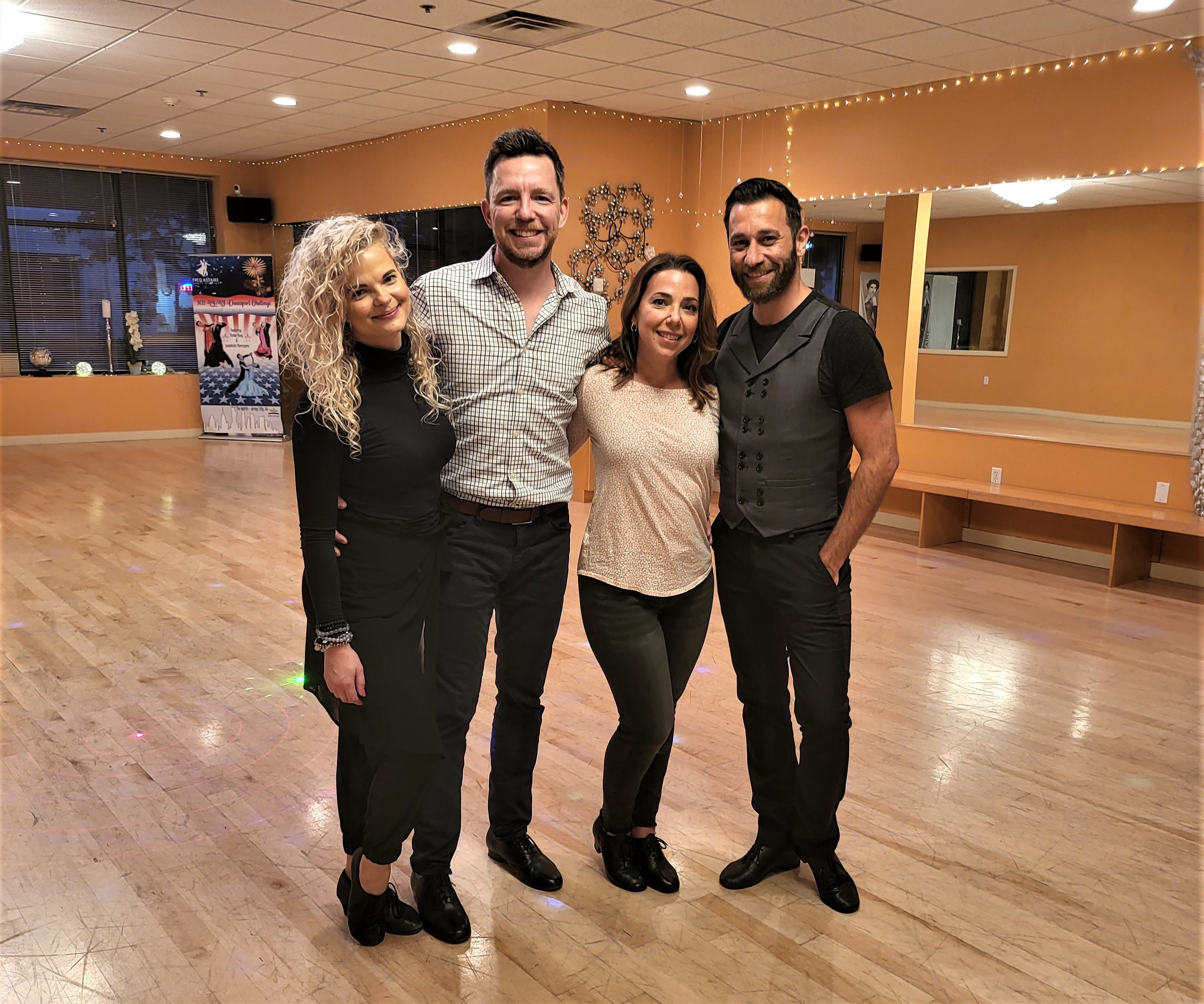Shall We Dance?
News Based on facts, either observed and verified directly by the reporter, or reported and verified from knowledgeable sources.
(Re)discovering the art of ballroom dancing, one step at a time

Good morning! Today is Friday, July 1, and you are reading today’s section of Examiner+, a digital newsmagazine serving Westchester, Putnam, and the surrounding Hudson Valley.
Need to subscribe — or upgrade your Examiner+ subscription to enjoy full access to all of our premium digital content? Take advantage of our special FREE TRIAL OFFER.
Take Examiner+ on a test drive today at NO CHARGE for a full month. Enjoy full membership-level access to all of our premium local content, delivered straight to your inbox six times a week.
Today’s presenting sponsor of Examiner+ is Manhattanville College.


What activity is centuries old, considered both an art and a sport, was once denounced by the Vatican (at least in part)*, and can be elegant and graceful as well as sexy and steamy?
If you guessed ballroom dancing, waltz or cha-cha to the head of the line.
Spectators appreciate that ballroom dancing is entertaining to watch ― Dancing with the Stars at its prime-time peak drew about 20 million viewers per week ― but dance enthusiasts know that it is even more fun to do.
Westchester is home to some top-tier dance professionals – many of whom are either current or previous championship competitors. Some are affiliated with franchises, others with independent studios or other locations. This means that students (referred to as “amateurs” to distinguish them from paid teachers within ProAm circles) have a wealth of talent to choose from.
WHAT MAKES BALLROOM, BALLROOM?
What makes ballroom different from other dance styles? According to Nikolai Shpakov, owner of Danznik Studios, “In a broad definition, ballroom is partnered dancing done in tandem (‘in hold’) with another individual.” That differs from dances that are usually performed solo, like tap or jazz, or with group dances done in circles or lines. “Ballroom isn’t just one thing,” he adds.
Simplistically, you can think of two major buckets – American and International styles – that generally fall under the ballroom dance umbrella and hail from a potpourri of global roots like samba (Brazil), rumba, cha-cha, and mambo (Cuba), paso doble (France/Spain), swing and jive (USA), and the tango (Argentina), Viennese waltz (Austria), and foxtrot, quickstep, and American waltz (USA).
PUT ON YOUR DANCING SHOES
Students come to ballroom for a range of reasons: planning to attend a special event like a wedding cruise or black-tie fundraiser, seeking exercise, rekindling an old interest, or as curious novices.
Erin Ringham, 58, took ballet lessons from about age 4 until she was 17 years old, but then she took more than a 30-year “dance break” while she went to law school, married, worked as an attorney, and raised two children.
“My Mom was very sick for a long time and lived with us. Watching what she was going through made me introspective about the things I wanted to do with the rest of my life,” says Ringham, a Mount Kisco resident.
With that self-reflection, Ringham started ballroom lessons nearly seven years ago and now takes lessons at Danzik in Hawthorne. “I rediscovered something about myself and the passion of dance,” she says.
Her early years of ballet training show up in Ringham’s gracefulness, but she still had to learn entirely new styles of movement with ballroom. “It’s been a real growth experience,” she says. Although her husband doesn’t dance, she says, “He’s very supportive of me and the fact that I take lessons.”

On Tuesday evening filled with music and laughter, Mike and Christina Morey moved to the staccato beat of a tango at Fred Astaire Dance, the Tarrytown franchise that husband-and-wife team, Sasha and Olga Bylim, have owned since 1999.
The Morey’s, now in their forties, have been married for 21 years. “We’ve always enjoyed dancing but had never taken lessons. Last September, we saw a TikTok video of people dancing and says, ‘We should do this!’” Mike explains.
With two children, ages 15 and 10, the Cortlandt Manor couple now carve out time for lessons twice weekly from their busy schedules. It has become their special date night. “It’s been nice to have this as a time for just the two of us,” Christina says. “It’s a learning process, not only the steps but how to hold our bodies in the right frame, but it’s starting to come together. We definitely have a great time.”
Ruth Andreades discovered ballroom dance as a later in life passion in her eighties. “I have always loved music. When my husband was alive, we enjoyed social dancing, but I had never taken lessons,” she says. “I was hooked from my first lesson and thrilled to have the opportunity to dance with such a talented professional as Waldemar,” she says.
Now ten years later, Andreades, 93, is still going strong in her weekly lessons with dance pro-Waldemar Tylinski at the Saw Mill Club’s ballroom in Mount Kisco. Andreades, a petite Somers resident, enjoys multiple dances but her favorites are Latin moves like the rumba and cha-cha, in which she can execute multiple spins with precision.
“I have a very active schedule. I play tennis, pickleball, bridge, canasta, and mahjong, but there is something special about dance. Every moment of my 45-minute dance lesson is heaven,” she says.

TWO LEFT FEET
It’s common to hear people say they would like to learn to dance but claim they lack rhythm or coordination or more casually refer to themselves as having ‘two left feet.’”**
Sage advice is for students to find a teacher who not only can dance but one whose teaching style fits well with their own.
“I think that everyone can dance,” says Shpakov. “The right match in a teacher is key and can help a student experience the music and movement in a way that they can relate to. It’s very personal.”
Dmitri Ostashken, co-owner of Ardsley’s New York Dance Center, noted, “When you take dance lessons, it should be about how you want to improve.”
He has taught students with a variety of learning challenges. One student had a problem with a leg that couldn’t bend, and another student whose posture was perpetually back weighted. “You have to embrace the challenge and look for an opportunity. As a teacher, you have to be able to read and adapt to the student the body language. This is a big part of teaching,” Ostashken says.
The Moreys say that it’s important to have teachers you are comfortable with and know how you react when you’re frustrated or are having problems learning. According to Mike, “When you’re taking lessons, you show a lot of vulnerability. You’re with people closely; you’re trying to get right. When you don’t, your frustrations will show.” So, do their teachers respond when they are frustrated? “They usually make us laugh,” he says.

TRIP THE LIGHT FANTASTIC
Other than private events, like weddings or parties, or an occasion tango party (milonga) at a restaurant, where can students use their dance skills?
Studio-hosted practice parties provide a venue and opportunity to dance with a range of professionals and other students, offer the chance to become accustomed to different partners, and can be a source of community and fun.
“It’s nice to have dance parties and get to hang out together and socialize,” Shpakov says.
Andreades appreciates the social nature of dance. She says, “I have gone to dance socials in the past. When men learn you can dance, they all want to dance with you.”
Dance competitions and showcases are other methods that students use for inspiration and to take things to another level, either by participating or observing. For those inclined, the tri-state area has an abundance of ProAm ballroom dance competitions throughout the year.
Ringham uses competitions as a method to challenge herself. “For me, it helps to have a concrete goal to work toward, and it’s a way to measure my performance as compared to what I’ve done in the past,” she says.
The Fred Astaire Tarrytown studio holds an annual showcase at the historic Tarrytown Music Hall, where their students and professionals can perform for invited guests.
The Moreys aren’t planning any competitions or showcases in their immediate future. “We are just doing it for fun,” they mutually agreed. But they recently put their newly found skills to use at a nearby Latin restaurant that has a DJ on the weekends. “We went there with some friends, and we cha-cha’d the hell out of that place,” Mike says.
KEEP ON SWAYIN’ TO THE MUSIC
Students come to ballroom for various reasons, yet what keeps them coming back? As with any hobby, time and/or money can sometimes be a challenge to momentum.
The price for private lessons varies, with a typical range of $85 -$130 per 40 to 60-minute session. Some places also offer group lessons. Shpakov says, “We find that younger people gravitate to group classes, which are less expensive. Most of the individual lessons are with adult working professionals and people who are retired.” Packages may also reduce the per lesson price.
Studios commonly offer special introductory package prices so that new students can figuratively take the lessons for a spin.
Olga Bylim described dance becomes a tool to teach people to move to music with grace, control, balance, and coordination. And it is a socially positive atmosphere. It doesn’t matter what their day was like before they come here, they leave a little happier.” Sasha says, “Dancing with a partner is another form of communication–it’s like speaking the same language.”
When so much of our interactions are through technology, Ostashken notes that dance is a different, personal way to connect with others. “Leading and following is just a way of communication and reading each other’s signals,” he says.
Ringham finds that ballroom differs from other kinds of exercise, even though she also teaches Zumba®, an aerobic fitness that incorporates music and dance moves. She explained, “Physical exercise is one aspect of dance, but ballroom is also an art form, and connecting with a partner and working as a team adds an additional dimension.”
“Quite simply, once the dance bug bites you, you’ll never want to give it up,” Andreades says.
For a map of Westchester Ballroom Dance Studios, click here.
AUTHOR’S NOTE:
I ‘learned’ to dance to rock-and-roll’s hypnotic backbeat, letting the freestyle moves take me wherever the music led. When it came time to slow dance, I tried to follow but instead usually grasped my partner’s shoulder in a little Vulcan nerve pinch.
Then the disco era arrived, complete with strobe lights, leisure suits, twists, turns, and the need to follow. I adopted a dance mantra, “Please don’t dip me, don’t twirl me, and I lead!”
A little over two decades ago, I began my ballroom dance journey. How I got here is a longer story. Why I continue can be summed up in one word: JOY.
I can now dip, twirl, and follow (most of the time). I make no promises about the Vulcan nerve pinch.
* Dances rebuked by various Popes include the waltz and the tango.
** Not to be confused with chorophobia, an intense fear of dancing. There’s even a documentary about it.
.
Sherrie Dulworth is a lower Hudson Valley freelance writer whose stories range across healthcare, careers, literature, and human interest. She often finds tranquility with her nose in a book or her feet on a hiking trail, but not simultaneously. Check out her blog for fellow bibliophiles at www.curiouscatsread.com, and her website showcasing her other works, www.sherriedulworth.com.
Examiner Media is a proud participant in The Trust Project.
CLICK HERE to review our best practices and editorial policies.
This piece is a news article. CLICK HERE to learn about our definitions for types of stories.
We welcome corrections, story ideas, and general feedback. CLICK HERE to use our actionable feedback form.
Visit www.TheExaminerNews.com to read our hyperlocal online community news, sports, and feature coverage.

Examiner Media – Keeping you informed with professionally-reported local news, features, and sports coverage.

